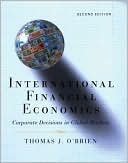Category Books
- Fiction Books & Literature
- Graphic Novels
- Horror
- Mystery & Crime
- Poetry
- Romance Books
- Science Fiction & Fantasy
- Thrillers
- Westerns
- Ages 0-2
- Ages 3-5
- Ages 6-8
- Ages 9-12
- Teens
- Children's Books
- African Americans
- Antiques & Collectibles
- Art, Architecture & Photography
- Bibles & Bible Studies
- Biography
- Business Books
- Christianity
- Computer Books & Technology Books
- Cookbooks, Food & Wine
- Crafts & Hobbies Books
- Education & Teaching
- Engineering
- Entertainment
- Foreign Languages
- Game Books
- Gay & Lesbian
- Health Books, Diet & Fitness Books
- History
- Home & Garden
- Humor Books
- Judaism & Judaica
- Law
- Medical Books
- New Age & Spirituality
- Nonfiction
- Parenting & Family
- Pets
- Philosophy
- Political Books & Current Events Books
- Psychology & Psychotherapy
- Reference
- Religion Books
- Science & Nature
- Self Improvement
- Sex & Relationships
- Social Sciences
- Sports & Adventure
- Study Guides & Test Prep
- Travel
- True Crime
- Weddings
- Women's Studies
The Birth of the Orchestra: History of an Institution, 1650-1815 »

Authors: John Spitzer, Neal Zaslaw
ISBN-13: 9780195189551, ISBN-10: 0195189558
Format: Paperback
Publisher: Oxford University Press, USA
Date Published: July 2005
Edition: (Non-applicable)
Author Biography: John Spitzer
John Spitzer studied with Reuben Brower and Barrington Moore at Harvard, where he received his first degree. He studied musicology and ethnomusicology at Cornell University with William Austin, James Webster, Sotiros Chianis, and Bell Yung. He held a Postdoctoral Fellowship at the University of Pittsburgh (1983-84), then taught at the University of Michigan (1984-87). In 1987 he joined the faculty of the Peabody Conservatory of the Johns Hopkins University in Baltimore, MD. He has published scholarly articles on the history of the orchestra, American song, authorship and authenticity, and the relations between Western and non-Western music, as well as music reviews and articles in newspapers, magazines, dictionaries, and encyclopedias.
Neal Zaslaw holds degrees from Harvard, The Juilliard School, and Columbia University. He is the author of more than 65 articles on baroque music, historical performance practices, Mozart, and the early history of the orchestra, as well as numerous books, including Mozart's Symphonies: Context, Performance Practice, Reception (Oxford, 1989), The Classical Era from the 1740s to the End of the 18th Century (Macmillan, 1989), and, most recently, Mozart's Piano Concertos: Text, Context, Interpretation (University of Michigan Press, 1995). A member of the Zentralinstitut der Internationale Stiftung Mozarteum and the American Academy of Arts & Sciences, Zaslaw has taught at Cornell University since 1970.
Book Synopsis
This book traces the emergence of the orchestra from 16th-century string bands to the "classical" orchestra of Haydn, Mozart, Beethoven, and their contemporaries. Ensembles of bowed stringed instruments, several players per part plus continuo and wind instruments, were organized in France in the mid-17th century and then in Rome at the end of the century. The prestige of these ensembles and of the music and performing styles of their leaders, Jean-Baptiste Lully and Arcangelo Corelli, caused them to be imitated elsewhere, until by the late 18th century, the orchestra had become a pan-European phenomenon.
Spitzer and Zaslaw review previous accounts of these developments, then proceed to a thoroughgoing documentation and discussion of orchestral organization, instrumentation, and social roles in France, Italy, Germany, England, and the American colonies. They also examine the emergence of orchestra musicians, idiomatic music for orchestras, orchestral performance practices, and the awareness of the orchestra as a central institution in European life.
Table of Contents
| List of plates | ||
| List of figures | ||
| List of tables | ||
| List of documents | ||
| List of music examples | ||
| Abbreviations | ||
| 1 | Introduction | 1 |
| 2 | Pre-orchestral ensembles | 37 |
| 3 | Lully's orchestra | 70 |
| 4 | Corelli's orchestra | 105 |
| 5 | The orchestra in Italy | 137 |
| 6 | The orchestra in France | 180 |
| 7 | The orchestra in Germany | 213 |
| 8 | The orchestra in England | 263 |
| 9 | The classical orchestra | 306 |
| 10 | Placement, seating, and acoustics | 343 |
| 11 | Orchestral performance practices | 370 |
| 12 | The life and times of an eighteenth-century orchestra musician | 398 |
| 13 | The birth of orchestration | 436 |
| 14 | The meaning of the orchestra | 507 |
| App. A | Sample orchestras, 1754-1759 | 534 |
| App. B | Sample orchestras, 1773-1778 | 537 |
| App. C | Sample orchestras, 1791-1796 | 542 |
| App. D | Sample orchestras, 1808-1818 | 548 |
| Bibliography | 553 | |
| Index | 593 |
Subjects
 Music Books
Music Books  Music Instruction & Education
Music Instruction & EducationEntertainment
 Music Books
Music Books  Music Theory & Composition
Music Theory & Composition
